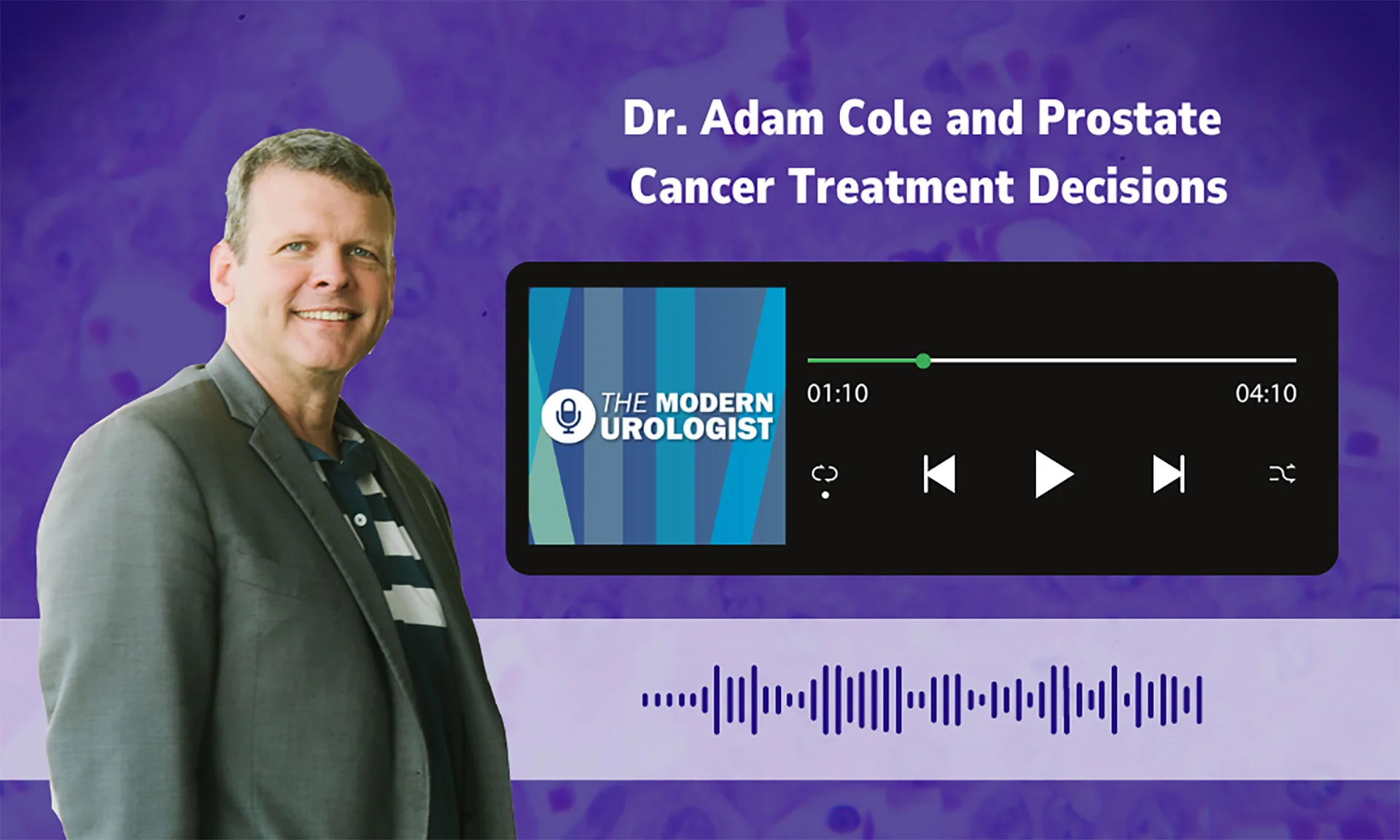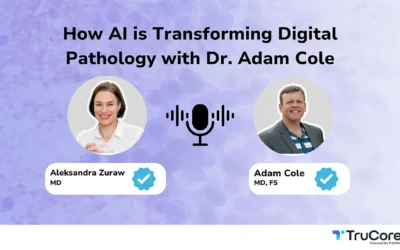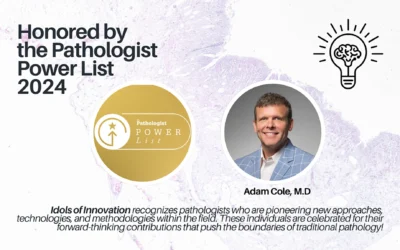Dr. Adam Cole spoke to urologist, Dr. Mark Edney about Gleason scores, how genetics play a role in prostate cancer treatment, and how digital pathology has increased accuracy of diagnoses in an episode of the Modern Urologist Podcast, released February 22nd.
Gleason scores play a vital role in prostate cancer treatment and diagnoses alongside genetic markers. Both urologists and pathologists use these scores to identify and stage the cancer. Dr. Adam Cole emphasizes the difficulty of identifying cancers and the differences between prostate cancer and other types of cancer, stating:
“We know of breast cancer. When you get breast cancer, we know. I mean, if you sample one end of it, it’s pretty much going to look like that way throughout the tumor. Same with colon cancer and pancreatic cancer. But prostate cancer is not that way. It looks different from one end to the other. And it can change. And it can change dramatically.”
Genetic testing helps pathologists and urologists tailor prostate cancer treatment for the specific patient. Dr. Cole elaborates on this stating, “In my opinion, genetics, whether that’s biomarkers, genomics, hereditary germ lines, you know, somatic testing, whatever it is, it’s an opportunity just like you mentioned, to insert some more objective data into this space, where to allow the urologist to better customize this treatment plan.”
Lastly, Dr. Cole highlighted the benefits of the transition from traditional to digital pathology, emphasizing specifically how that has changed prostate cancer diagnoses. He starts off with describing his older experiences diagnosing cases:
“When I see a prostate case now or actually, let’s go back in the past, I would put the slide down on a microscope. I would identify prostate cancer. I might put like, no kidding a dot, you know, on one end of the prostate cancer and another dot where I thought the prostate cancer ended. And then I would eyeball that. And I would say that looks like about 50%. “
Dr. Cole goes further into depth on how diagnosing cases has changed and improved since moving from traditional to digital pathology. Everything is now at the pathologists fingertips. iPads for diagnosis and moving everything digital has not only made the process move along quicker, but also increases the accuracy of the diagnosis.
“Now I can tell you for the first time ever, [where that tumor is comprised.] Is it more located towards the pseudo capsular surface? Or is it discontinuously involving the core? Why that becomes important? There’s a focal therapy aspect, right? If that’s where the patient wants to go.”
The ability to pinpoint the core of a tumor is valuable for deciding how the cancer should be treated. The power of digital pathology is changing patient lives and outcomes.




